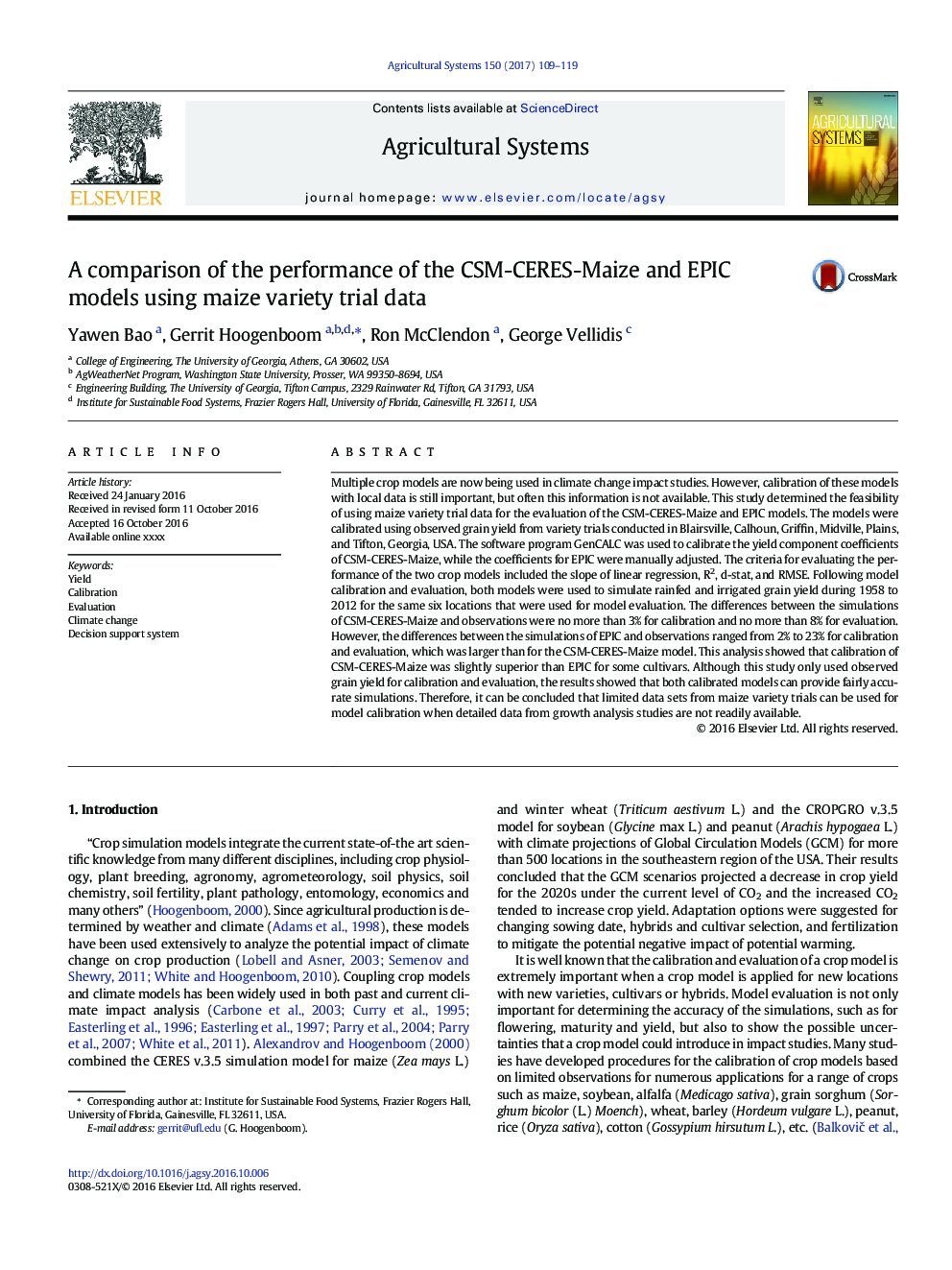| کد مقاله | کد نشریه | سال انتشار | مقاله انگلیسی | نسخه تمام متن |
|---|---|---|---|---|
| 4491111 | 1623220 | 2017 | 11 صفحه PDF | دانلود رایگان |
• Local experimental data are important for evaluation of crop simulation models.
• Statewide variety trial data can play an important role for model evaluation.
• This study evaluated the CSM-CERES-Maize and EPIC models for hybrid response.
• The genetic coefficients for seven current maize hybrids were determined.
• Model performance ranged from 3 to 8% for CSM-CERES-Maize and from 2 to 23% for EPIC.
Multiple crop models are now being used in climate change impact studies. However, calibration of these models with local data is still important, but often this information is not available. This study determined the feasibility of using maize variety trial data for the evaluation of the CSM-CERES-Maize and EPIC models. The models were calibrated using observed grain yield from variety trials conducted in Blairsville, Calhoun, Griffin, Midville, Plains, and Tifton, Georgia, USA. The software program GenCALC was used to calibrate the yield component coefficients of CSM-CERES-Maize, while the coefficients for EPIC were manually adjusted. The criteria for evaluating the performance of the two crop models included the slope of linear regression, R2, d-stat, and RMSE. Following model calibration and evaluation, both models were used to simulate rainfed and irrigated grain yield during 1958 to 2012 for the same six locations that were used for model evaluation. The differences between the simulations of CSM-CERES-Maize and observations were no more than 3% for calibration and no more than 8% for evaluation. However, the differences between the simulations of EPIC and observations ranged from 2% to 23% for calibration and evaluation, which was larger than for the CSM-CERES-Maize model. This analysis showed that calibration of CSM-CERES-Maize was slightly superior than EPIC for some cultivars. Although this study only used observed grain yield for calibration and evaluation, the results showed that both calibrated models can provide fairly accurate simulations. Therefore, it can be concluded that limited data sets from maize variety trials can be used for model calibration when detailed data from growth analysis studies are not readily available.
Journal: Agricultural Systems - Volume 150, January 2017, Pages 109–119
